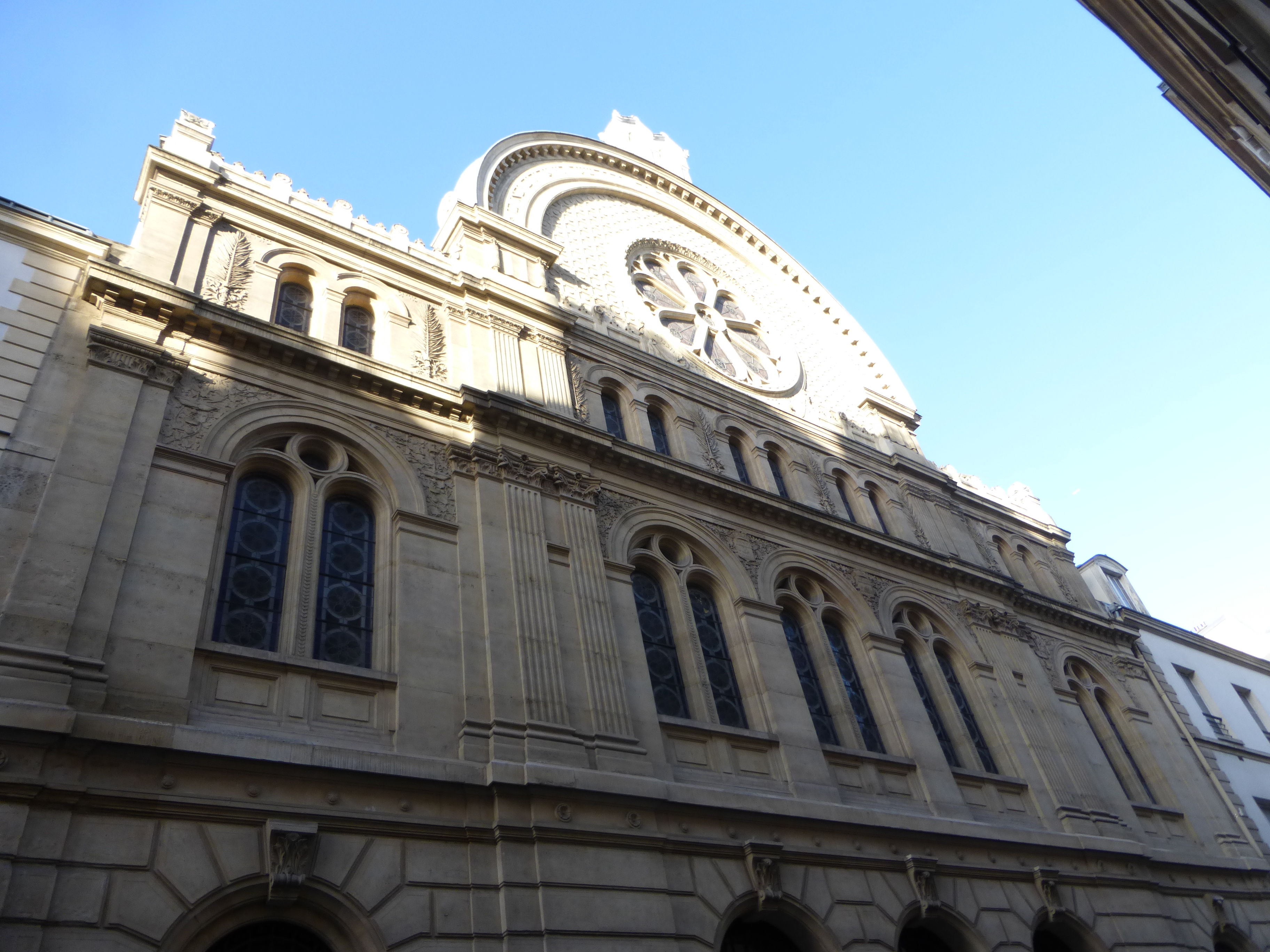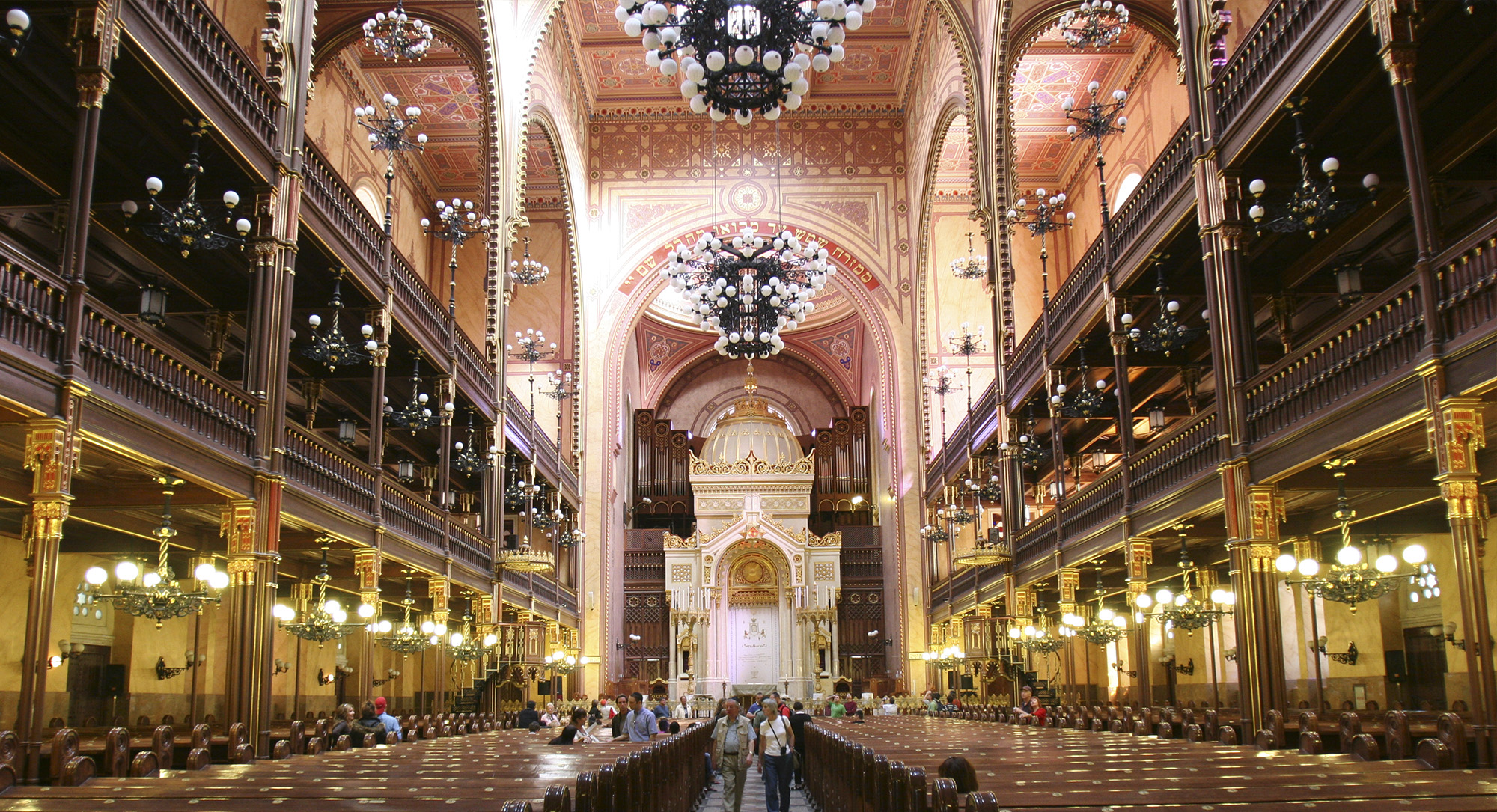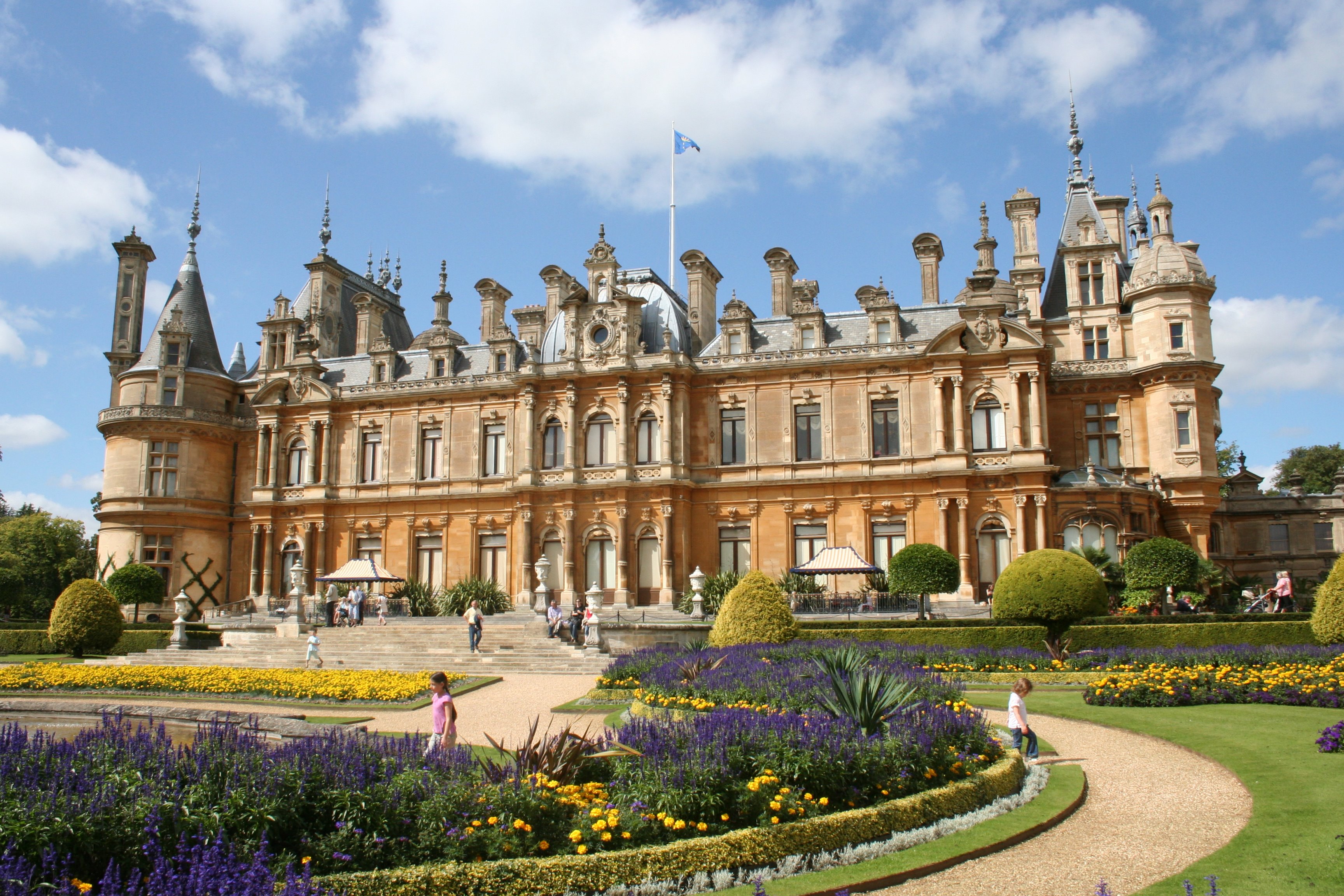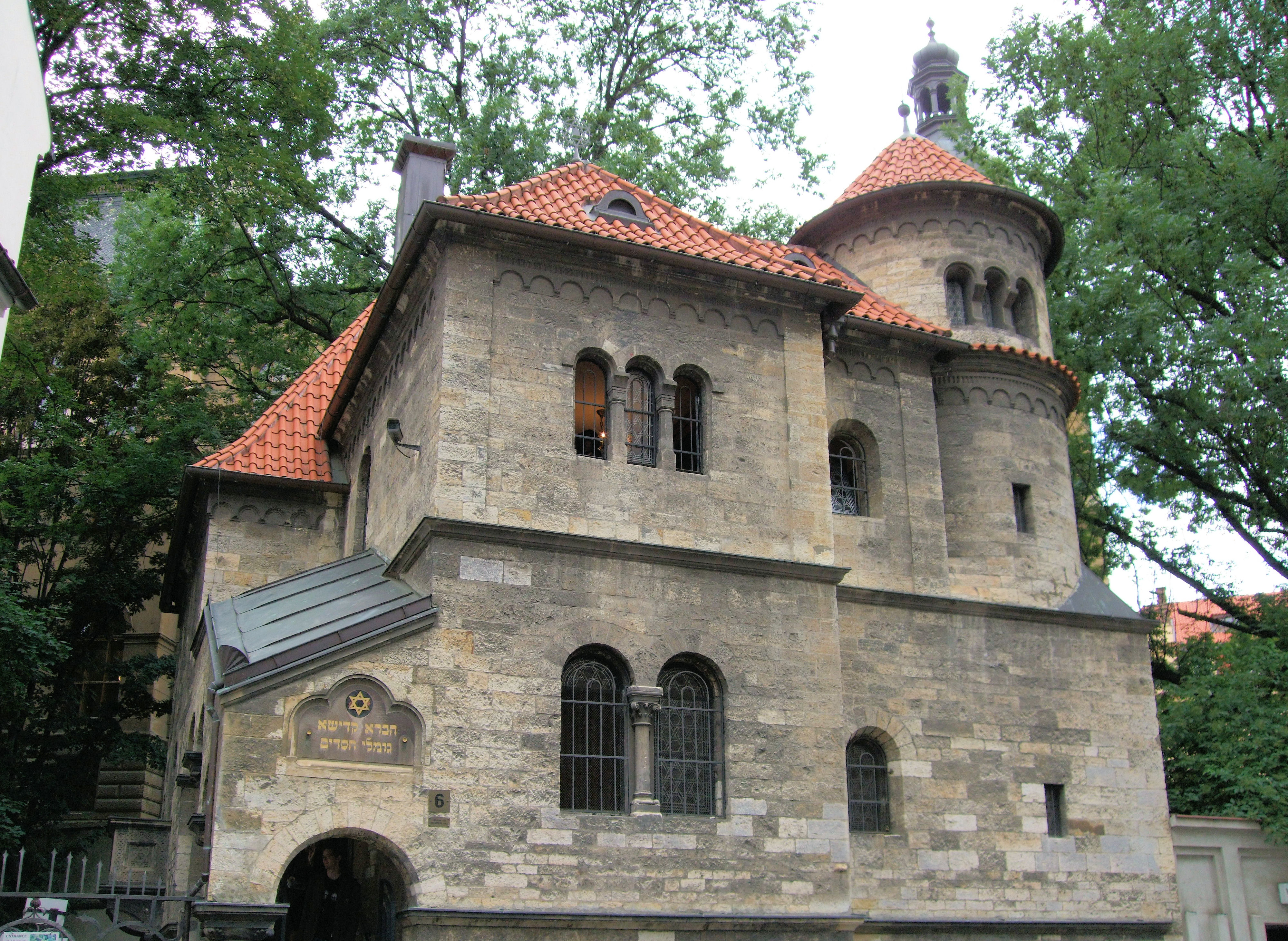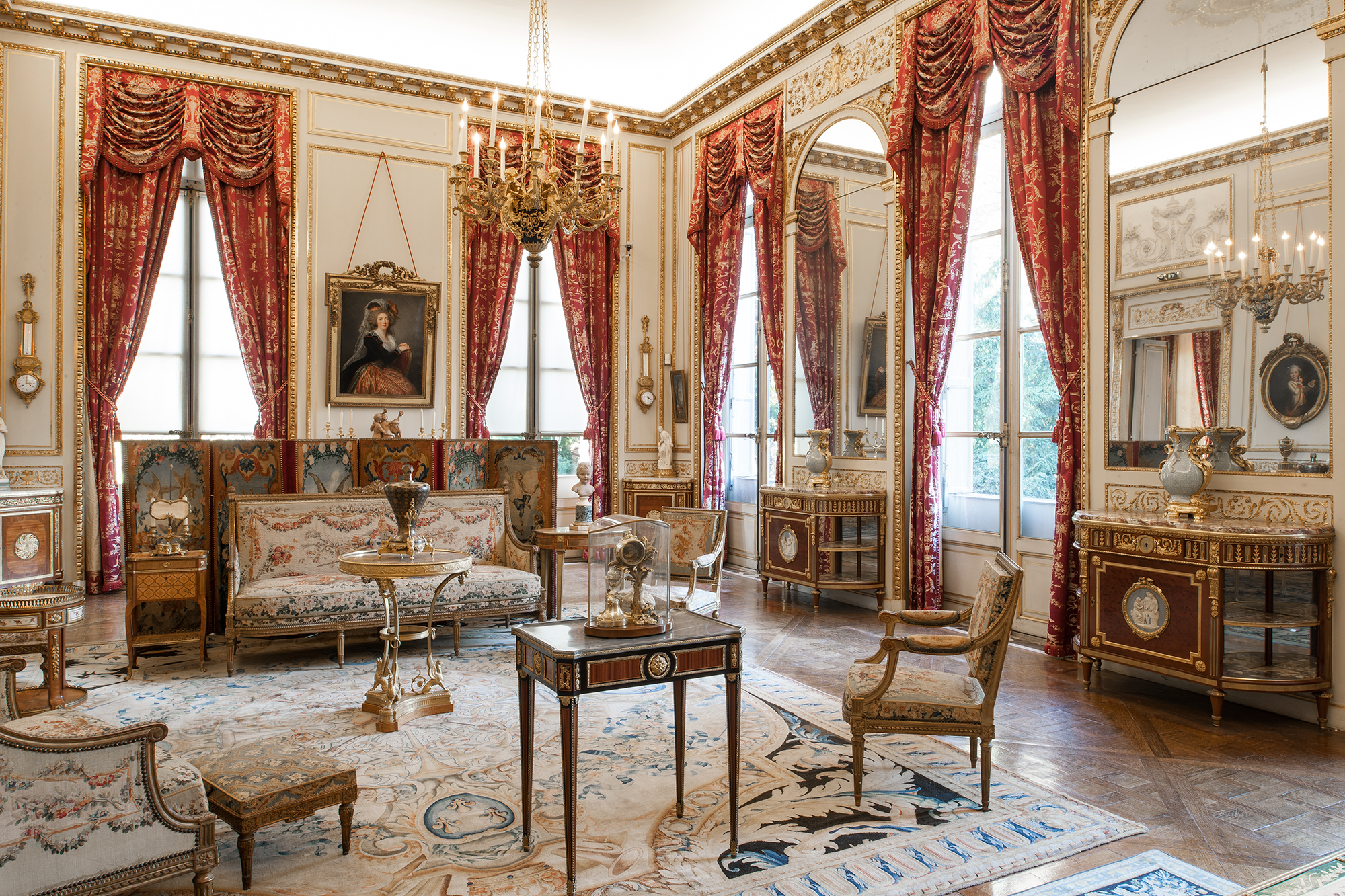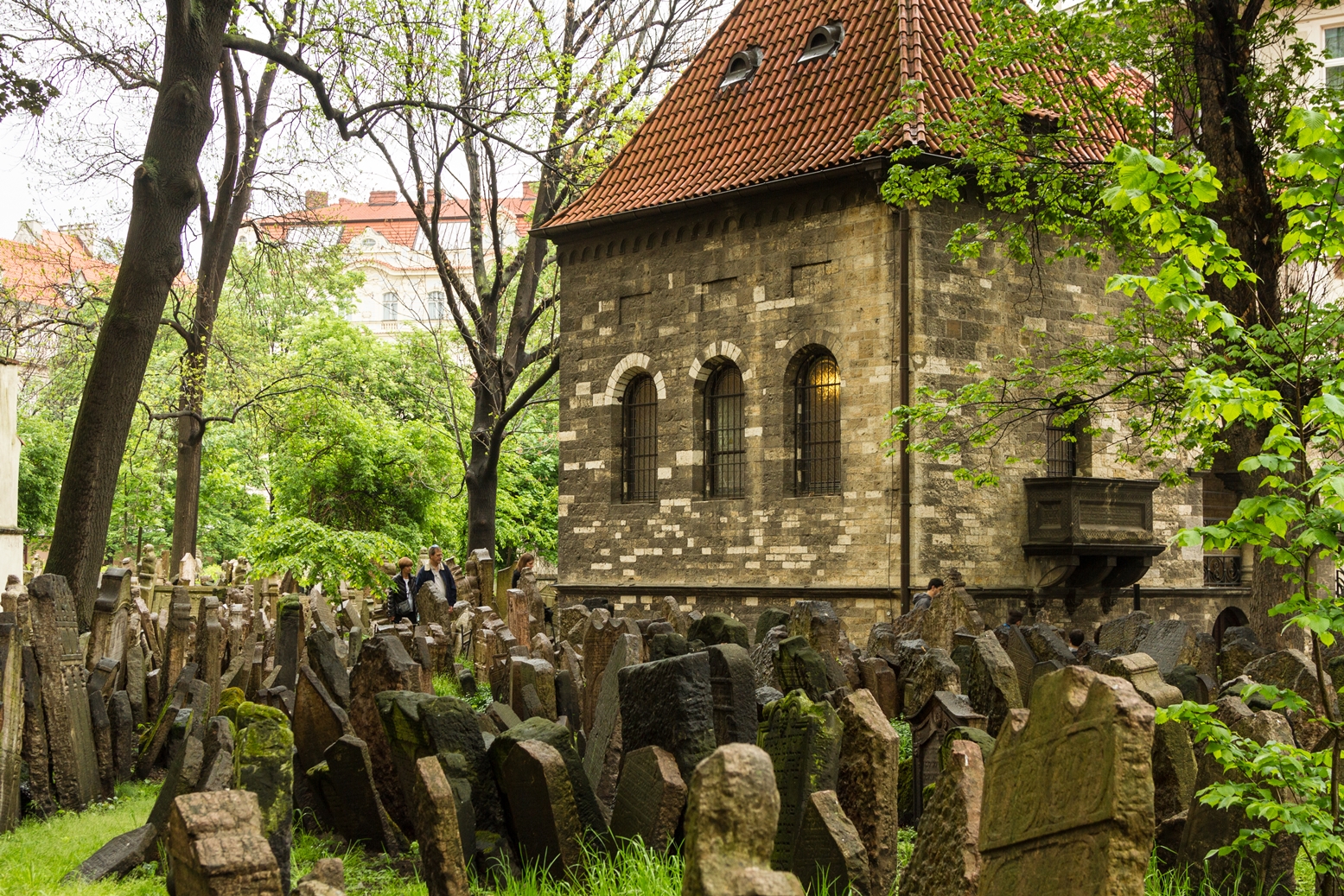The first written mention of a Jewish presence in Germany dates from an edict of the Emperor Constantine in 321 A.D. Until the 12th century, relations between the ruling authorities and Jews were essentially cordial. Religious and cultural life in Spire, Mainz and Worms flourished; scholars like Rashi and Gershom ben Yehuda moved to Germany to teach Jewish law and creed.
The emancipation of German Jews ending their ghettoization began in the 17th century and attained its apogee under Kaiser Wilhelm. In 1871 Germany had 512,000 Jews; in 1933, they still numbered 503,000, representing the third largest community in Europe after Poland and Russia. German Jews not only created many of the country’s leading banks and enterprises, but had a cultural and scientific impact of international renown. With the arrival of Hitler to power, Albert Einstein, Robert Oppenheimer, Hannah Arendt, Arnold Schönberg, Fritz Lang, Billy Wilder were among the persons who were forced to emigrate with the rise of Nazism.
Today, with the unification of Germany, the Jewish community has close to 200,000 members and represents the fastest growing community in Western Europe. Reunited Germany has made a concerted effort starting with Chancellor Angela Merkel to address its crimes against humanity during the Nazi era and to expose them fully to the international visitor. It is important to stress that the history of Jews in Germany did not end in 1945 and there are clear signs of cultural renewal. The aim of European Jewish Heritage Tours is to show how the tragedy of the past can lead to a hopeful present and future.
Jewish Berlin
The importance of Berlin in modern Jewish history is hard to estimate. Berlin’s stature as a leading world capital, renowned in the early 20th century for scientific accomplishment and artistic experimentation, was powered to a great extent by Jewish initiative.
Yet, it was also in Berlin, that this extraordinary and eminent society, was obliterated, for it was this same German capital that hosted Adolf Hitler and brough the Nazi regime to power.
Today, in reunited Berlin, with the fastest growing Jewish population in Western Europe, the rich Jewish history and heritage of the city is coming back to life thanks to the initiative of the German government and private funding.
With European Jewish Heritage Tours, our guides will show you the old Jewish quarter in the former East Berlin, starting with the Neue Synagogue Museum in Oranienburgerstrasse, once the site of the largest and most beautiful synagogue in Germany. Also on the tour is the old Jewish Cemetery on Grosse Hamburger Strasse, which contains grave of Moses Mendelssohn (1729-1786), a philosopher and the forefather of Jewish Enlightenment. The cemetery was built in 1672 and destroyed during the Second World War. The reopening of the cemetery was celebrated at the end of 2008.
A must-see near the Reichstag is the Memorial to the Murdered Jews of Europe, consisting of 2,711 columns forming a vast mazelike Holocaust memorial, with an underground exhibition room. .In Schoenberg, you will discover a conceptual Holocaust memorial titled “Places of Memories” that traces the Nazi regime’s anti-Jewish laws from the first ordinances forbidding them to sing in choirs to the final order urging the destruction of all files involving anti-Semitic activity. Still, our tours are not limited to memorials to a “lost” community.
With European Jewish Heritage Tours, you will also discover Berlin’s thriving synagogues and Jewish day schools, including the first learning center in East Berlin built since the war, the Lauder Judisches Lehrhaus, funded by the Ronald S. Lauder Foundation and Berlin’s Jewish community.
You’ll find this spirit of renewal visiting one of the world’s leading art collections, the Berggruen Museum, with major works by Van Gogh, Cezanne, Klee, Braque and Matisse, donated to Berlin by Heinz Berggruen, the renowned Jewish art collector and dealer.
Our local guides will take you to Berlin’s Jewish Museum, designed by Daniel Libeskind, which permits you to deepen your understanding of Jewish Berlin through its award-winning exhibitions. To complement this visit, we highly recommend a discovery tour at the German History Museum which traces the history of Berlin since its founding.
Younger people and families will be particularly moved by the Anne Frank Zentrum in Berlin, with its new permanent exhibition: Anne Frank, Here and Now. The exhibition covers in great detail the life of Anne Frank, her diary and its relevance today. A must!
Whether it’s the personal history of past and present Jewish Berliners, or the works of leading modern Jewish artists, European Jewish Heritage Tours provides an unexpected eye-opener to the German capital.
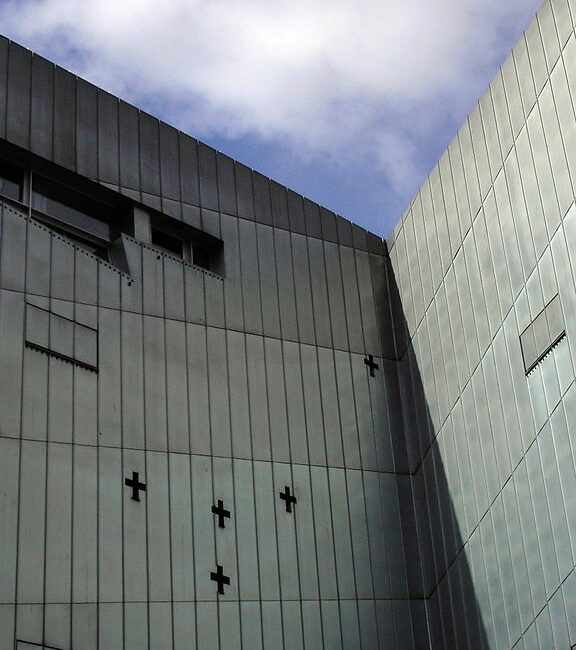



Jewish Frankfurt
A free city of the Germanic Empire, Frankfurt began to welcome Jews as early at 1150, although many historians maintain that Jews were in the city at the time of Charlemagne. From 1460 until their Emancipation, Jews were confined to the Judengasse (“Street of the Jews”) that would soon resemble an overpopulated ghetto. It was in this very street where the money lender Meyer Amschel Rothschild founded his banking dynasty with his 18 children eventually spreading out through Europe to create different branches of the Rothschild bank.
A visit of Jewish Frankfurt includes the Jüduisches Museum Frankfurt am Main, open since 1988 in the former 19th century home owned by the Rothschilds. This museum—now closed for renovations until 2018—once documented the Jewish heritage of Frankfurt from the Middle Ages until the 20th century, and offered an informative exhibition on Jewish life and rituals. (When it reopens, its exhibits will cover Jewish life in Frankfurt from 1800 to the present).
In the meantime, European Jewish Heritage Tours can arrange for you to visit the newly renovated Judengasse Museum, you will discover the life of the Jewish ghetto from the 15th until the 19th century. Also on the program is the Westend Synagogue—the only one to have survived Kristallnacht—and the Old Jewish Cemetery and Neuer B Memorial, whose 11,000 small blocks set into the wall feature the names of every Jew deported from Frankfurt.
It is also possible to organize a day trip from Frankfurt to the medieval city of Worms, home of the matchless 11th century Biblical scholar, Rashi. Worms is a site of eventful history for both Christians and Jews; today, its importance to the Jewish world is attested to by its nickname, “Little Jerusalem.” Experience a walking tour of this landmark in Jewish culture, visiting the restored Rashi Synagogue (“Raschihaus”), first built in 1157 and rebuilt after World War Two after it was destroyed by the Nazis. The other must-see is the Holy Sands Cemetery, the oldest preserved Jewish burial place in Europe, dating from the 11th century. The cemetery is a peaceful, evocative place with old, weathered gravestones leaning gently in the shady precincts, their Hebrew inscriptions eroded by centuries of wear. The most famous belongs to Rabbi Meir of Rothenburg who was born in Worms around the year 1215 and became the leading authority of his day on the Talmud and Jewish law.
Jewish Heidelberg, Rothenburg and Augsburg
There is little left of the original Jewish presence in the picturesque university town of Heidelberg, but a new synagogue has a committed congregation. The Central Archives for Research on the History of the Jews in Germany was founded in 1987 and offers Jewish communities an opportunity to store old records and documents. Although little is left of the pre-1945 community documents, there are collections of family papers going back to 1850 plus photographs of headstones in Jewish cemeteries. European Jewish Heritage Tours can arrange for you to visit their archives. Synagogenplatz is a memorial based on a synagogue that was burnt down during the infamous Kristallnacht in 1938. It follows the original layout of the synagogue (built in 1877). Paving stones indicate the walls and twelve stone cubes show the location of the pews and stand for the twelve tribes of Israel.
No visit to Heidelberg is complete without a visit to Heidelberg Castle, one of the most famous ruins in Germany, being the most important Renaissance structure north of the Alps. The castle has only been partially rebuilt since its demolition in the 17th and 18th centuries. It is located 260 feet up the northern part of the Königstuhl hillside, and thereby dominates the view of the old downtown.
Our next stop is in Rothenburg, for a walking tour of its historic center. Following the first mention of a Jew in Rothenburg in 1180, the town experienced a blossoming of Jewish culture. This is where the famous Talmud expert Rabbi Meir ben Baruch von Rothenburg taught for over forty years. He founded a Yeshiva on Kapellenplatz, a school of Talmudic studies that attracted scholars from all over Europe. A bronze plaque at Kapellenplatz No. 5 commemorates Meir von Rothenburg.
Kapellenplatz was also the center of everyday Jewish life, with the synagogue, community hall and businesses providing for daily needs. After the complete expulsion of the Jews in 1520, the synagogue and cemetery (now Schrannenplatz) were leveled. On our tour, you will see the community hall on the corner of Judengasse / White Tower, known as the “Jewish Dance House” a reminder of the ancient Jewish community. While this building is a reproduction, you can see original gravestones from the 13th and 14th centuries in the Judaica Department of the Imperial Town Museum. The highlight of a visit to Rothenburg remains the Judengasse, which has borne its name since 1371. Here Jews and Christians lived side-by side. This is the only surviving late medieval Jewish street in Europe.
The first records of Jews in Augsburg go back to the thirteenth century. By the latter half of the 1200s, the Jewish community, or Judenberg, was well organized and complete with a synagogue, cemetery, wedding hall or “dance-house,” and a bath house. Run by the town rabbi and a community council of 12 members, the community’s members were cattle and wine traders and moneylenders. The Jews of Augsburg made a name for themselves throughout Germany. The Augsburg Municipal Charter of 1276 favorably established political and economic rights for the Jews and was taken up by other German cities. Furthermore, Jewish Talmudic scholars in Augsburg developed their own method of study and analysis, known as Augsburg hillukim. The Jewish community flourished throughout the first half of the fourteenth century. The local Augsburg government even protected its Jews from abuse and death during the Rindfleisch massacre in 1298.
Thanks to an ambiguous political position on the outskirts of the Habsburg empire, Augsburg and the surrounding area hosted thriving Jewish communities in the 19th century. In 1914, Augsburg’s Jewish community hired the architects Lömpel and Landauer to build a grand synagogue in the city center. Built in the Art Nouveau style, it was completed in 1917.
Tragically, the Jewish community in Augsburg was wiped out on Kristallnacht and the synagogue was burned, though not destroyed. After the fall of the Nazis and the liberation of the concentration camps, Augsburg became a refugee camp for displaced persons.
Today, European Jewish Heritage Tours can arrange a visit of the Byzantine-influenced Art Nouveau synagogue, one of Augsburg’s most notable historical buildings. The monumental structure, built at the beginning of the 20th century, is an impressive testament to German-Jewish culture, an exceptional record of Jewish history in Bavaria, and today – following the destruction of the Jewish community during the Nazi period – once again the center of a Jewish congregation, one that has grown rapidly with the arrival of Jews from former territories of the Soviet Union.
Damages caused to the synagogue on Kristallnacht were repaired between 1974 and 1985, and the sanctuary restored and rededicated. Since that time the building’s west wing has housed the Jewish Culture Museum Augsburg-Swabia, founded in 1985 as the first independent Jewish museum in postwar Germany. In 2006, the museum inaugurated a new comprehensive exhibition showing selected objects that document the rich culture and momentous history of the Jews in Augsburg and Swabia from the Middle Ages to present times.
Any stay in Augsburg will be enhanced by visits to the following unique sites: The City Hall built by Elias Holl between 1615 to 1620, the most significant secular Renaissance building north of the Alps. The restored Golden Hall is famous for its magnificent, pompous portals, coffered ceiling and mural paintings. Another must-see is the Perlach Tower next to the City Hall, which offers a spectacular panoramic view of Augsburg. Also, make time to see the Fuggerei: the world’s oldest social housing: it encompasses 67 houses with 140 council flats. Annual rent is 1 Rhenish gulden (an equivalent of 1 euro), established by banker Jacob Fugger.
Lastly, our guide will show you the Schaezler Palace, once the residence of the banker Liebert von Liebenhofen who used his wealth to commission a richly furnished rococo banqueting hall (1765-1770), Germany’s most important Baroque gallery. Here you will also see the State Gallery of Bavaria with paintings by such Old Masters such as Dürer, Holbein and Cranach.






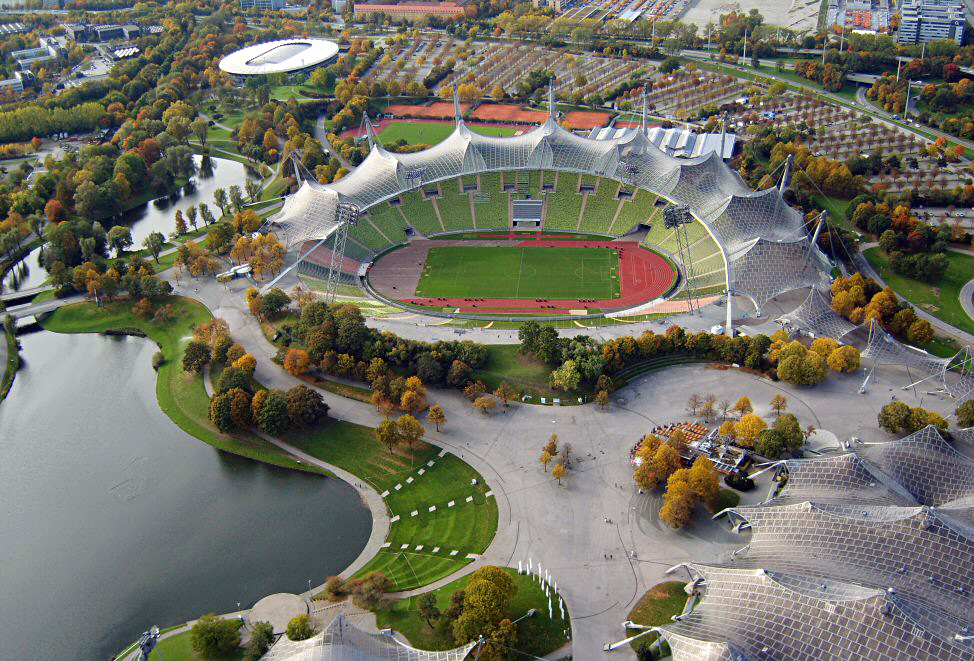


Jewish Munich and Dachau
In 1880 the pogroms in Russia resulted in an influx of Eastern European Jews to Munich, and opened up lucrative businesses in leather goods and fur trading. The Ohel Jakob synagogue—the third largest of its kind in Germany holding 1,800 congregants was inaugurated in 1892.
Munich’s Jews played a prominent role in its economic, social and cultural life, and took part in multi-faceted Jewish religious and communal activities. The central offices of many Jewish national institutions were located there, and a Zionist weekly and the official paper of the Union of Jewish Communities in Bavaria were published in the city.
For Munich’s Jews, the Nazi regime meant discrimination, calumny, deportation and extermination. However, since World War II, the Jews have slowly but surely returned to Munich. By the autumn of 1941, some fifteen hundred Jewish apartments had been confiscated. The Jews who had been driven out of their homes were assigned to forced labour, constructing a camp at Milberthausen, a suburb of Munich, to accommodate the Jews who were now homeless. A total of 2,991 Jews were deported from Munich; of the 1,555 who were sent to Theresienstadt, 297 returned to Munich after the war, most of the others were murdered in the Holocaust.
Today, Munich has been able to recapture the cultural and architectural grace of the pre-war era and is now far more important than before. Similarly, its Jewish community is much more prominent within the totality of German Jewry than it was prior to 1933.
With European Jewish Heritage Tours, you will discover the Jewish Community Center, which represents the heart of 21st-century Jewish Munich. Located at St. Jakobs Platz, it houses the main Ohel Jakob Synagogue, Restaurant Einstein, the Munich Jewish Museum and several Jewish organizations. Funding for the synagogue, which cost about $72 million, was provided by the city, the state of Bavaria and Munich’s Jewish community of 9,200. The construction of the Jewish Center which opened in 2007 on the Jakobsplatz demonstrates the revival of a thriving community.
Other must-sees on the tour: A few steps from Munich’s central Marienplatz, a stone Menorah Monument marks where the city’s main synagogue stood until Kristallnacht. Nearby, in the courtyard at Lenbachplatz, is Joseph Henselmann’s Fountain Statue of Moses in the Desert. In Milbertshofen a new Holocaust Memorial has been dedicated at the wartime deportation site for Munich’s Jews. Take time to eat at Cohen’s and Schmock, two lively Jewish-Israeli restaurants.
Although Munich was the birthplace of National Socialism, its Ludwig-Maximilian University was also home to the anti-Nazi White Rose Movement. Led by students Hans and Sophie Scholl, and their Professor, Kurt Huber, the White Rose distributed anti-Nazi leaflets in 1942 and 1943, publicizing details of the Final Solution and German battlefront losses. A Memorial Plaque to the White Rose Martyrs is in the university’s main lobby. The White Rose Information Center is near the university’s Lichthof Hall.
Your visit to Munich can be expanded to include the Memorial Site of the former concentration camp of Dachau. This former concentration camp site, with its Jewish Memorial Chapel, stands as an eternal reminder to Germans and the world: “Never Again!” Our Dachau tour covers the 12 years of the concentration camp’s existence using personal accounts from survivors, taking advantage of museum displays and of course the buildings and grounds themselves. Our dedicated Jewish guide has the expertise to provide a comprehensive understanding of this tragic period in Munich’s history. (Access to Dachau is by car).
Jewish Dusseldorf
Düsseldorf was birthplace of one of Germany greatest poets, the Jewish Heinrich Heine. Today, you can hardly walk a block in the city without seeing something named for Heine, from streets to pubs to monuments to its university. Born in Düsseldorf in 1797, Heine was greatly influenced by the Napoleonic occupation that emancipated the Jews overnight. European Jewish Heritage Tours will show you Heine’s birthplace, in the heart of the old city is today, like many neighboring buildings, a pub: “Schnabelewopski.” Nearby, at Bilker Strasse, is the Heinrich Heine Institute, a literary museum and research center, housing the original manuscripts of “The Lorelei” and “The Rabbi of Bacharach,” personal mementoes, paintings and Heine’s death mask. Yet, Heine was not the only Jewish citizen to make a mark on Düsseldorf. In front of St. Maximillian’s Church a monument honors seven prominent Düsseldorfers in history, of whom three are Jews: Heine, former mayor Willem Marx, and Arthur Schlossmann, a pediatrician who founded the medical school that ultimately grew into the Heinrich Heine University.
In the art collection of the Stadtmuseum Düsseldorf are paintings of the Young Rhineland movement, many of whose members were Jews. Their works were banned by the Nazis, and many were included in Munich’s “Exhibition of Degenerate Art.” The museum also houses exhibits on the development of National Socialism and its impact on Düsseldorf. Another exhibit on Nazi persecutions is at the Düsseldorf Memorial Center at Muhlenstrasse.
Close to 10,000 Jews live in Düsseldorf today. The Düsseldorf JCC has an ambitious cultural program of concerts, lectures, youth and adult education. Its beautiful white-stone synagogue opened in 1958. Düsseldorf’s largest pre-war synagogue, on Kasernenstrasse, was destroyed on Kristallnacht: a stone Synagogue Memorial marks the site.




Jewish Cologne
The Cologne-based Salomon Oppenheim Bank is one of the few major businesses in Germany again under its pre-war Jewish ownership. With European Jewish Heritage Tours, you will discover the former medieval Jewish quarter in front of the Gothic city hall. The lane that runs in front of the building is the Judengasse (Jewish Lane). Next to City Hall the medieval main synagogue and others once stood. Museenkoeln is currently engaged in an archeological project that will include the opening of a Cologne Jewish Museum. Currently, all that remains of medieval Cologne Jewry is the mikveh reached by descending fifty feet down a Romanesque stairwell of hewn sandstone.
In the Rathaus, you will see the “Nine Good Heroes” of ancient history, including Elijah, King David and Judah Maccabee. Cologne’s modern opera house stands on the site of the 19th-century Glockengasse Synagogue destroyed on Kristallnacht. The center of today’s Jewish community is the Great Roonstrasse Synagogue, the city’s only synagogue to survive the Nazis. The building also houses the Jewish Community Center, a small exhibit on Cologne Jewry, a library, kosher restaurant, youth center and much more.
Cologne’s skyline is dominated by the Dom, the Catholic Cathedral now a UNESCO World Heritage site. On the left wall, past the transept, is the original stone-etched letter of protection of Cologne’s Jews issued by Archbishop Engelbert II in 1266. At the rear of the cathedral, the left side of the middle panel of three stained-glass windows depicts Elijah, Abraham and Isaac, Samuel, Salomon and Sheba.
Jewish Dresden
Straddling the River Elbe, immortalized by Canaletto and once known as “Florence on Elbe,” Dresde, has now emerged from the horrors of its fire-bombing in February 1945 followed by a half-century of Communism. Kristallnacht saw the destruction of the Dresden Synagogue, an architectural treasure designed by the same Gottfried Semper who created the city’s magnificent opera house.
With European Jewish Heritage Tours, you will discover the new Dresden Synagogue, opened in 2002, standing on the same site, with the Star of David saved from the original synagogue. It was hidden by a local firefighter and is now installed above the entrance of the new building. The Old Jewish Cemetery on Pulsnitzer Strasse is the oldest in Saxony, with graves dating back to 1750.
Though the attribute ‘world famous’ is dished out all too readily, it is a befitting term in the case of Dresden. The city is famed not only for its three major landmarks – Zwinger Palace, Semper Opera House and the Church of Our Lady – but also for Brühl Terrace and the Royal Palace, for the Elbe palaces on the Loschwitz hillside, for the exclusive villas of Blasewitz, the garden city of Hellerau and, of course, for the twelve Dresden State Art Collections. And not forgetting the city center’s prime position on the western bank of the Elbe, at the apex of one of the river’s gently sweeping meanders. Dresden’s no. 1 world-famous building has to be Zwinger Palace, widely considered a masterpiece of baroque architecture.
Dresden boasts superb museums that add to its cultural prowess, including the Green Vault – the world’s largest treasure chamber – at the Royal Palace as well as Raphael’s Sistine Madonna is displayed. For almost 700 years, Dresden has also been famed for its music. It is not only performances at the Opera House that enrapture audiences but also the State Orchestra, the Dresden Philharmonic and the Kreuzchor boys’ choir.


We look forward to hearing from you soon.
Feel free to write [email protected]
or click on our Contact page. An initial phone or Zoom consultation is free of charge.
Rachel Kaplan
President
